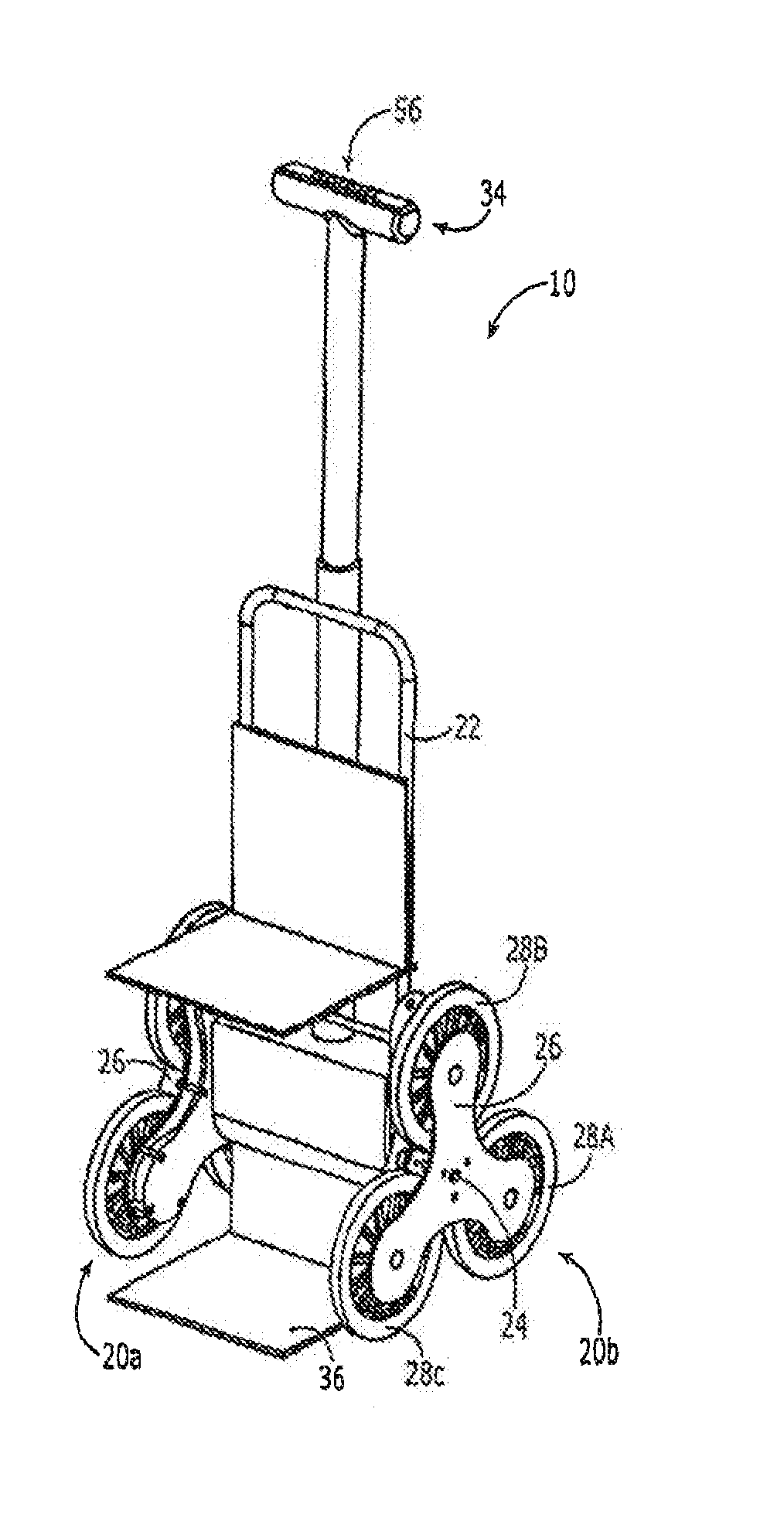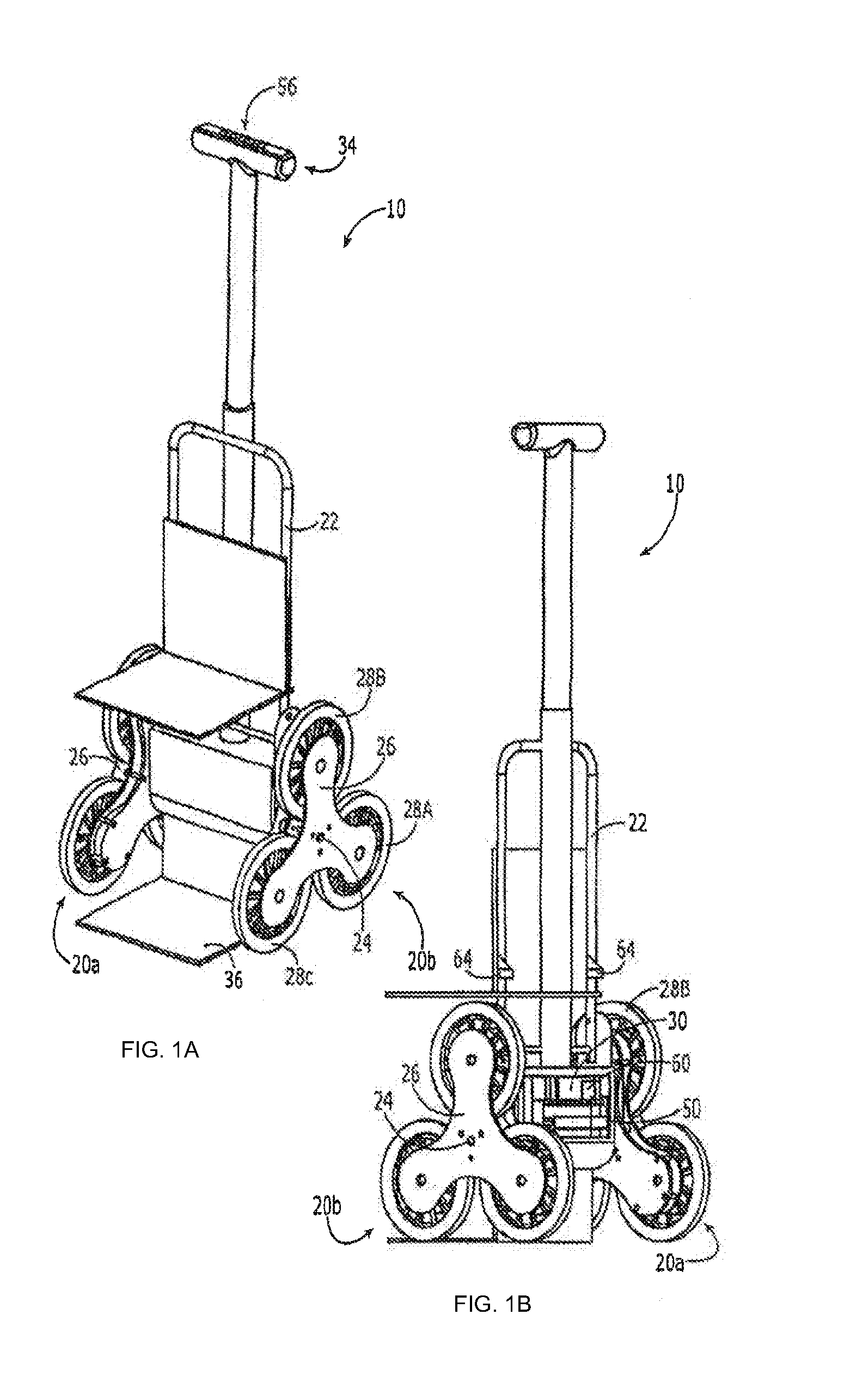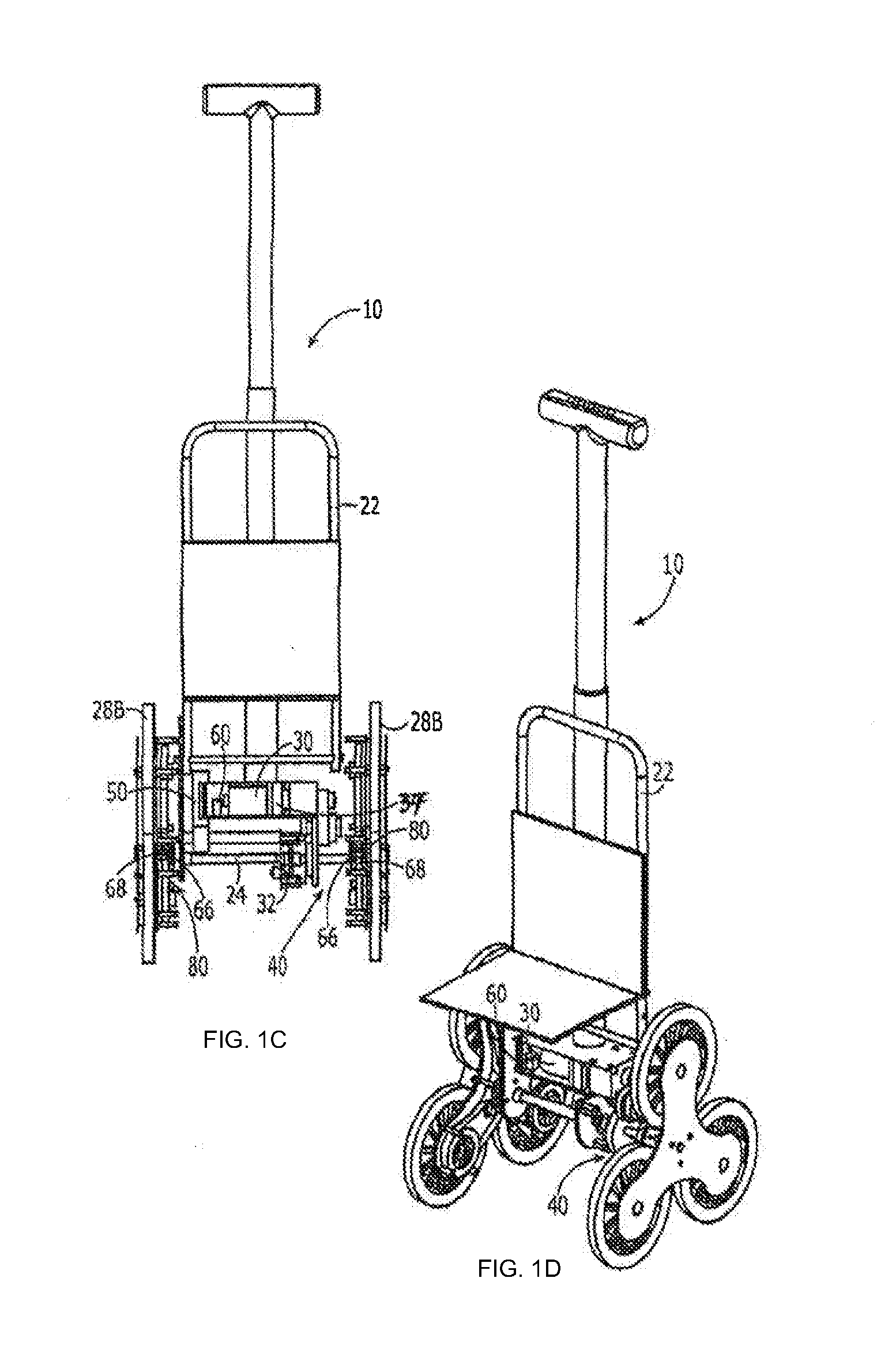Stair climbing wheeled vehicle, and system and method of making and using same
a wheeled vehicle and stair climbing technology, applied in the direction of hand cart accessories, couplings, slip couplings, etc., can solve the problems of large steering problems when used on flat ground, high cost, and difficult use of vehicles, and achieve the effect of reducing the difficulty of turning the vehicle, and increasing the difficulty of vehicle rotation
- Summary
- Abstract
- Description
- Claims
- Application Information
AI Technical Summary
Benefits of technology
Problems solved by technology
Method used
Image
Examples
Embodiment Construction
[0033]It is to be understood that the figures and descriptions provided herein may have been simplified to illustrate elements that are relevant for a clear understanding of the present disclosure, while eliminating, for the purpose of clarity, other elements found in typical wheeled-vehicle apparatuses, systems and methods. Those of ordinary skill in the art may recognize that other elements and / or steps may be desirable and / or necessary to implement the devices, systems, and methods described herein. However, because such elements and steps are well known in the art, and because they do not facilitate a better understanding of the present disclosure, a discussion of such elements and steps may not be provided herein. The present disclosure is deemed to inherently include all such elements and steps, and all variations and modifications to the disclosed elements and methods that would be known to those of ordinary skill in the pertinent art.
[0034]The present invention relates gener...
PUM
 Login to View More
Login to View More Abstract
Description
Claims
Application Information
 Login to View More
Login to View More - Generate Ideas
- Intellectual Property
- Life Sciences
- Materials
- Tech Scout
- Unparalleled Data Quality
- Higher Quality Content
- 60% Fewer Hallucinations
Browse by: Latest US Patents, China's latest patents, Technical Efficacy Thesaurus, Application Domain, Technology Topic, Popular Technical Reports.
© 2025 PatSnap. All rights reserved.Legal|Privacy policy|Modern Slavery Act Transparency Statement|Sitemap|About US| Contact US: help@patsnap.com



